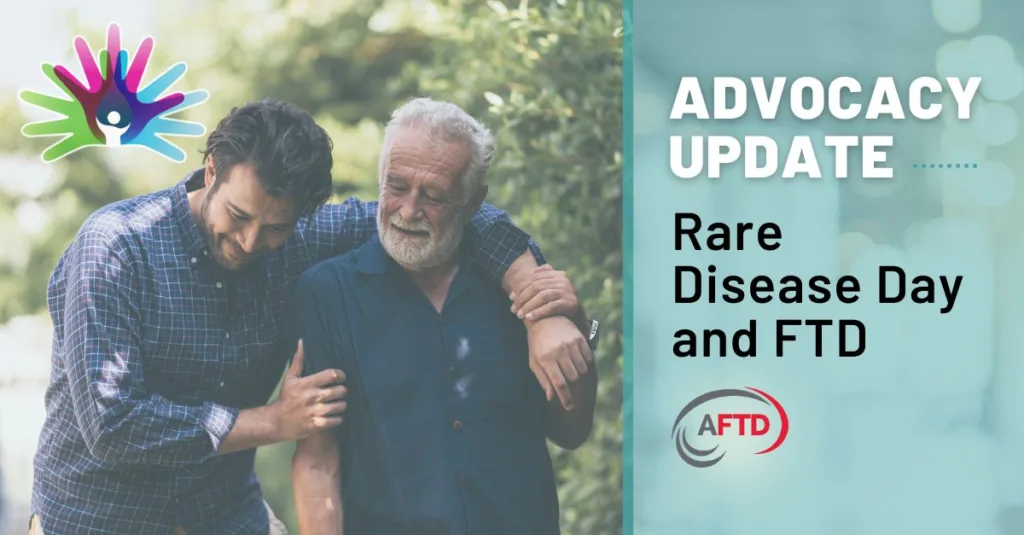Advocacy Update: Rare Disease Day and FTD

Rare Disease Day, which occurs annually on the last day of February, was established by the European Organization for Rare Diseases and first observed on February 29, 2008. Rare Disease Day was first observed in the United States in 2009; today, over 100 countries and regions around the world observe it. The goal of Rare Disease Day is to raise awareness of the 10,000 life-threatening or chronically debilitating rare diseases that affect a small percentage of a population that special efforts are required to detect and treat them.
There is no single global definition of a rare disease. In the U.S., the Rare Disease Act of 2002 defines it as any disease or condition that affects fewer than 200,000 residents (approximately 1 in 1,500 people living in the U.S.). Of the 10,000+ diseases that are considered rare, fewer than 500 have an FDA approved treatment or therapy. An estimated 300 million people around the world, and 30 million people in the U.S., are living with a rare disease.
The first Rare Disease Day in 2008 celebrated the 25th anniversary of the passage of the Orphan Drug Act (ODA) in 1983. The ODA fundamentally changed the landscape of drug development for rare diseases, paving the way for the approvals of hundreds of drugs and other treatments. The ODA makes it possible for pharmaceutical companies to invest in developing treatments for diseases that would otherwise not be financially viable to treat due to their low prevalence, including FTD. As recently as last November, AviadoBio received orphan drug designation for its gene therapy AVB-101 for the treatment of FTD-GRN. Even more recently, the FDA granted “breakthrough therapy designation” to the drug latozinemab, a therapy for FTD-GRN being developed by Alector and GSK Biopharmaceutical.
While the exact prevalence of FTD is still undetermined, its status as a rare disease enables pharmaceutical companies to access a variety of incentives and financial safeguards that allow them to invest in the research and development of experimental drugs and therapies. Such incentives would never have been enacted if advocacy organizations like the National Organization for Rare Disorders (among others) hadn’t marshalled a community of persons diagnosed, families, and healthcare professionals to demand that legislators pass the innovative laws that make this progress possible.
AFTD now has tools and resources that allow members of our community to speak up for positive change more easily. To learn more about how you can become an AFTD advocate, check out our new Advocacy Action Center. If you are interested in learning more about AFTD’s growing advocacy program, don’t miss the upcoming AFTD training webinar, “Making a Difference: Become an FTD Advocate,” on March 19.
By Category
Our Newsletters
Stay Informed
Sign up now and stay on top of the latest with our newsletter, event alerts, and more…
